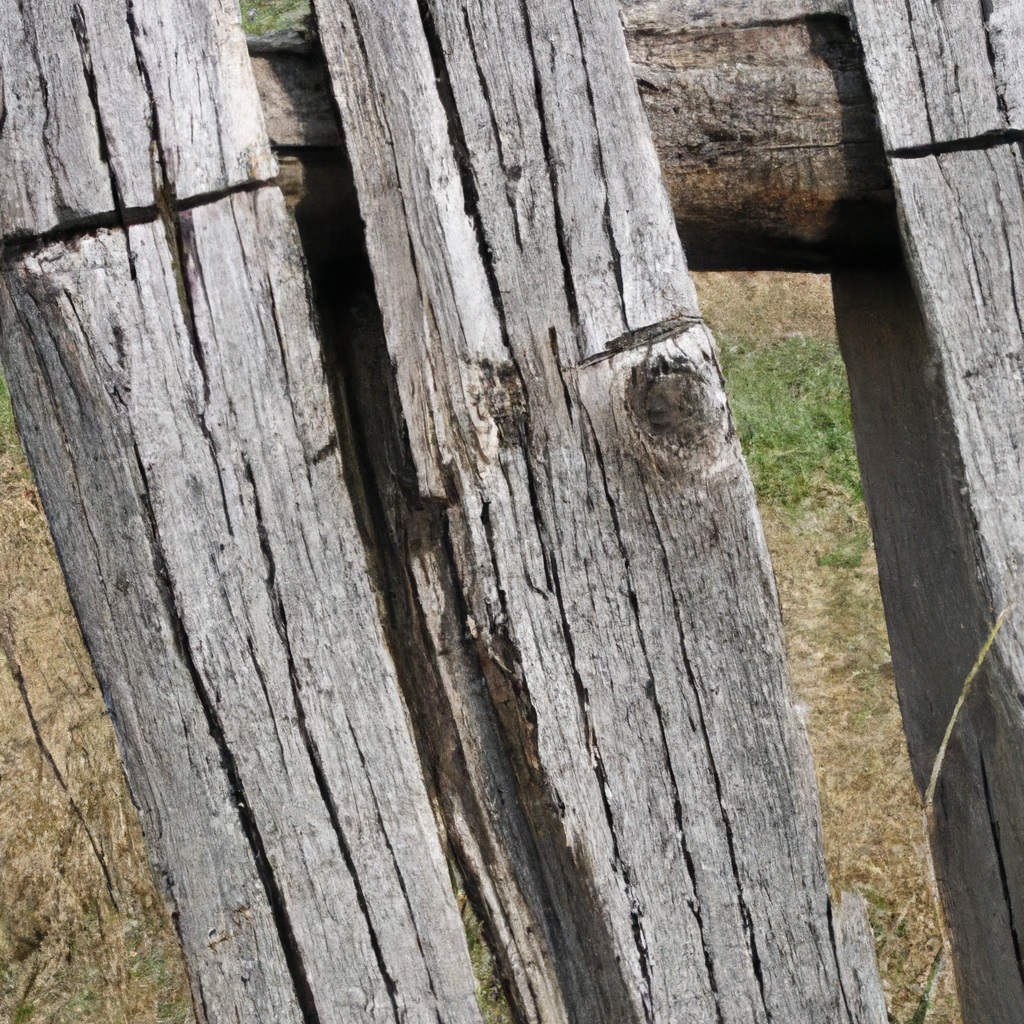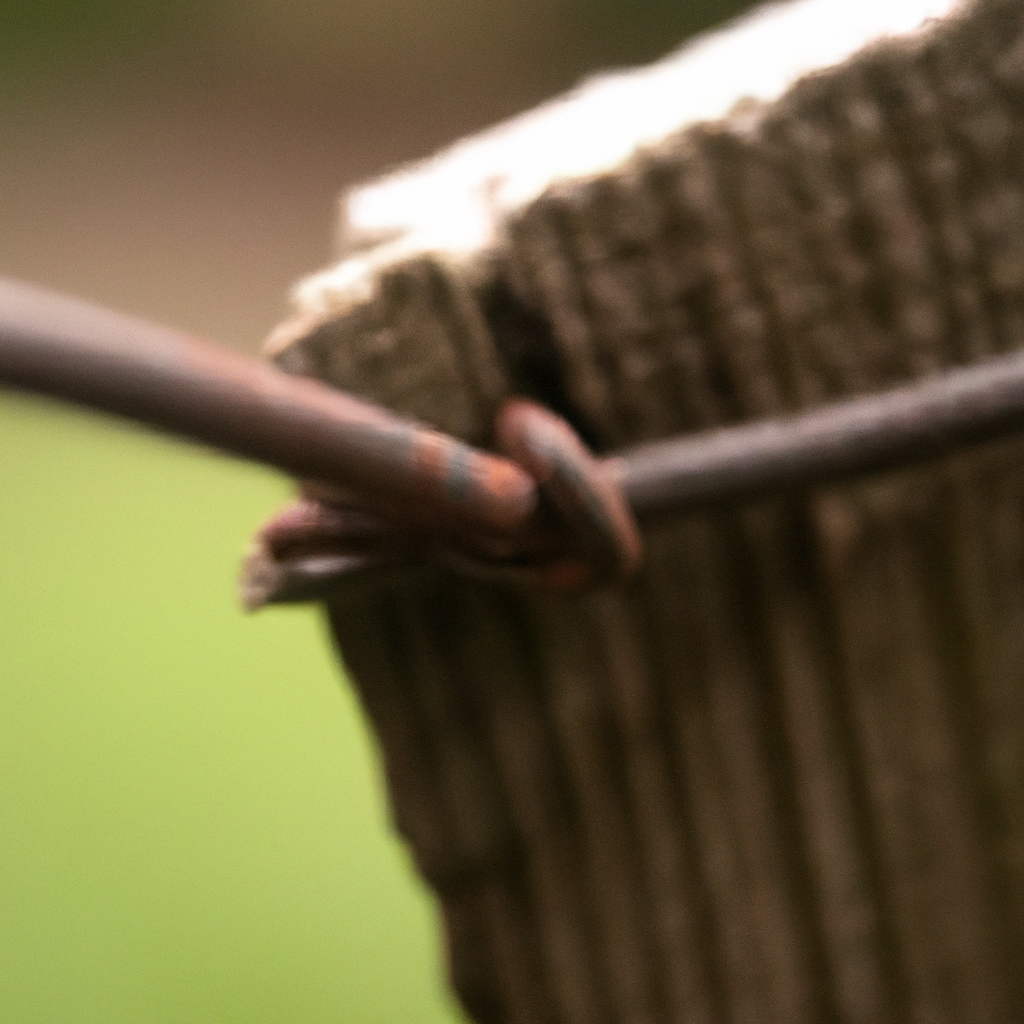
If you find yourself faced with a broken fence post, fear not! This quick guide will walk you through the simple steps of replacing a broken fence post, saving you time and money. Whether it’s due to age, weathering, or accidental damage, a broken fence post is no match for your handy skills. With just a few tools and some basic know-how, you’ll have your fence looking good as new in no time. So grab your gloves and let’s get started on fixing that broken fence post!
Assess the Situation
When you notice a broken fence post, the first step is to assess the situation. Take a closer look at the damage and inspect the post to determine the cause. Is it rotting, damaged by strong winds, or simply worn out over time? Understanding the root cause will help you come up with the most effective solution for replacing the broken fence post.
Inspect the Damage
To properly assess the damage, closely examine the broken fence post. Look for any signs of rotting, termite infestation, or physical damage. Check if the post is still securely attached to the ground or if it has become loose. Inspecting the damage will give you a better understanding of the scope of the repair needed and if any additional repairs or replacements are necessary.

Determine the Cause of the Damage
After inspecting the damage, it’s important to determine the cause. Different factors can lead to a broken fence post, such as extreme weather conditions, age, or poor installation. If the post is rotted, it could be due to moisture buildup in the soil or lack of proper treatment. Understanding the cause of the damage will help prevent future issues and ensure a more durable replacement.
Gather Necessary Tools and Materials
Before replacing the broken fence post, gather all the necessary tools and materials to make the process smoother. This will save you time and ensure you have everything you need within reach.
Tools needed:
- Shovel
- Post hole digger
- Sledgehammer
- Level
- Screwdriver or drill
- Saw (if cutting a new post)
- Tape measure
Materials needed:
- New fence post
- Concrete or gravel (for securing the post)
- Screws or nails (if reattaching existing panels)
- Wood preservative (optional)

Remove the Old Fence Post
With the tools and materials ready, it’s time to remove the old fence post. Follow these steps to ensure a proper removal process:
Clear the Area Around the Post
Start by clearing the area around the broken fence post. Remove any debris, vegetation, or rocks that might hinder the removal process. Ensuring a clear workspace will make it easier to work and prevent any potential accidents.
Loosen and Remove Any Screws or Nails
If the broken post is attached to any fence panels, carefully loosen and remove any screws or nails holding them together. Use a screwdriver or drill to safely remove the fasteners, ensuring not to damage the panels in the process. Set the panels aside for later reattachment.
Detach the Post from the Ground
Use a shovel or post hole digger to loosen the soil surrounding the broken fence post. Dig around the post until you can access the bottom and sides. Once the post is accessible, carefully detach it from the ground by wiggling it back and forth or by using a sledgehammer to gently knock it loose. Remove any remaining debris or roots from the hole.
Prepare the New Fence Post
Now that the old post is removed, it’s time to prepare the new fence post for installation. Follow these steps to ensure a proper fit and enhanced durability:
Measure and Cut the New Post
Measure the height and width of the old post and use these measurements to cut the new post accordingly. Double-check the measurements before cutting to ensure a precise fit. If necessary, use a saw to cut the new post to the desired size.
Treat the New Post (Optional)
To enhance the longevity of the new post, consider treating it with a wood preservative. This step is especially important if the previous post was damaged due to rot or pests. Applying a wood preservative will protect the post from moisture, insects, and natural decay, ensuring a more durable replacement.

Dig the Hole
With the new post prepared, it’s time to dig a hole to properly anchor it into the ground. Follow these steps to ensure a stable foundation for your replacement fence post:
Mark the Hole Location
Using your tape measure, mark the location of the hole for the new post. Ensure it aligns with the rest of the fence line and is set at the appropriate depth. The hole should be slightly wider than the diameter of the new post to allow for easy installation.
Dig the Hole
Use a shovel or post hole digger to dig the hole. The depth of the hole should be approximately one-third the length of the new post, with some additional depth for gravel or concrete. Remove any excess soil and rocks from the hole to ensure a secure fit for the new post.
Install the New Fence Post
With the hole ready, it’s time to install the new fence post. Follow these steps to ensure a proper and stable installation:
Place the New Post in the Hole
Carefully lower the new post into the prepared hole, ensuring it is centered and aligned with the fence line. Use a level to check for vertical alignment and make any necessary adjustments. Ensure there is enough clearance at the top for the panels to be reattached.
Secure the Post with Concrete or Gravel
To provide stability and prevent the new post from shifting, secure it with concrete or gravel. For concrete, mix according to the manufacturer’s instructions and pour it into the hole around the post. Make sure to brace the post while the concrete sets. Alternatively, if using gravel, fill the hole around the post and pack it tightly for stability.
Check for Stability
Once the post is secured with either concrete or gravel, check for stability. Gently shake the post to ensure it is firmly anchored and doesn’t wobble. If there is any instability, adjust the post or add more concrete or gravel as needed.

Attach the Fence Panels
After the new post is securely installed, it’s time to reattach the fence panels. Follow these steps to ensure a seamless and sturdy reattachment:
Reattach the Existing Panels
If the existing fence panels were removed during the old post’s removal process, reattach them to the new post. Align the panels with the new post and use screws or nails to secure them in place. Ensure the panels are level and evenly spaced for an aesthetically pleasing result.
Install New Panels if Necessary
If the old fence panels are damaged or need replacement, take this opportunity to install new ones. Measure the required dimensions, purchase the appropriate panels, and follow the manufacturer’s instructions for installation. Ensure the new panels are securely attached to the new post and aligned properly with the rest of the fence.
Finish and Secure the Fence Post
To complete the fence post replacement, finish off the project by following these final steps:
Fill the Hole with Soil
After the fence panels are securely reattached, fill the hole around the new post with soil. Use a shovel to pack the soil tightly around the post, ensuring it is stable and well-supported. Take care not to damage the newly installed post while filling the hole.
Apply Wood Preservative (Optional)
If you previously treated the new post with a wood preservative, take this opportunity to apply an additional coat. A wood preservative will further protect the post from moisture and extend its lifespan. Follow the manufacturer’s instructions for applying the preservative and allow adequate drying time.
Add Any Necessary Finishing Touches
Inspect the entire fence line to ensure all elements are secure and aligned. Replace any missing or damaged hardware, such as brackets or clips, to ensure the fence is fully functional. Take this opportunity to add any necessary finishing touches, such as painting or staining the fence panels, to enhance the overall appearance.

Inspect and Maintain the Fence
After successfully replacing the broken fence post, it’s important to regularly inspect and maintain the fence to ensure its longevity:
Check for Stability
Periodically check the stability of the fence by gently shaking the posts and panels. If any components feel loose or unstable, take immediate action to reinforce or repair them. Addressing potential issues early on will prevent further damage and prolong the lifespan of your fence.
Perform Regular Maintenance
Perform regular maintenance tasks to keep your fence in optimal condition. This includes cleaning the fence panels periodically to remove dirt and debris, inspecting for any signs of rot or damage, and applying wood preservative as needed. Additionally, trim any nearby vegetation that may grow into or damage the fence to ensure its integrity.
By following these comprehensive steps and properly maintaining your fence, you can successfully replace a broken fence post and ensure the continued functionality and aesthetics of your fence. Remember to prioritize safety, gather the necessary tools and materials, and take your time throughout the process for optimal results.